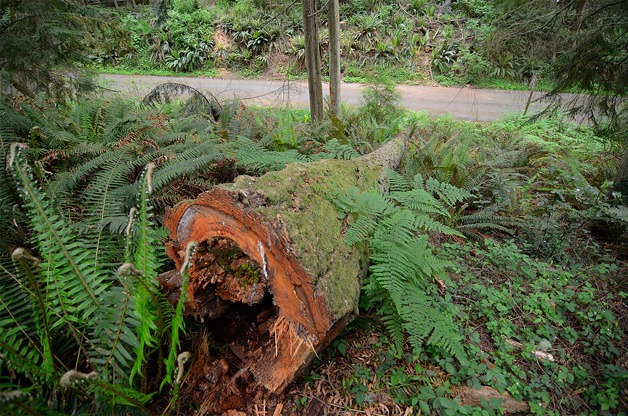The fate of overnight camping at South Whidbey State Park is on its way to being decided.
The start of what will likely become an eight- to 10-month process in determining the longterm plan for South Whidbey State Park began Wednesday night when the Washington State Parks and Recreation Commission held its first planning process meeting.
Earlier this year, tree rot and disease led the state to ban overnight stays at the Freeland park for safety concerns. What to do with the state park in the future was the question of the night at the Whidbey Water Services building in Freeland.
State Parks staff compiled the written notes of attendees’ thoughts, concerns, and hopes for how the loss of overnight camping should be handled and then read them aloud so all voices could be heard. State Parks Planner Randy Kline counted about 45 people at the meeting.
The handling of rotting trees, day-use camping, trails, and neighboring property owner issues were among the topics brought up.
“There’s a lot of strong feelings around how the campground issue should be handled,” Kline said.
The baseline goal of the first meeting was getting a feel for the issues surrounding the state park, as well as two of the other proposed locations that have not undergone the campground process, Kline said.
Two other state park’s properties are the 560 acres of tidelands in Useless Bay, which was acquired by the state in 1947, and Possession Point State Park, acquired in 2001.
The planning process, also called Classification and Management Planning or CAMP, occurs in four stages: Identification of park issues, development of plan alternatives, preliminary staff recommendations and final recommendations to the commission, according to a slideshow presented at the meeting.
This process will also include reviewing park land classifications, determining resource management issues and proposing general approaches for addressing them based on analysis of resource inventories, and gathering technical information, according to the website.
“We are going to come up with some different ways of approaching the issues that were identified (Wednesday) night,” Kline said.
South Whidbey State Park’s campgrounds remained closed in May, the scheduled reopening from the winter closure, due to the rotting of Douglas fir trees on the campgrounds.
The biggest issue of the night was determining whether to cut down the diseased trees and reopen overnight camping, or leave the trees as they are and keep overnight camping closed.
Ted Brooks, former president of the Friends of South Whidbey State Park, said he would like to see the issue find a middle ground.
“What I’m hoping will happen, and there is some support for this, where it will neither be black or white but grey; where some campgrounds will be open and many tees will be left standing, and where they are standing there will be closed campgrounds and obviously a greater use of the park during daytime.”
“In other words, less emphasis on camping,” Brooks added.
The end result of the planning process will include land classifications where management zoning sets the use and development intensities, a long-term park boundary which identifies properties that further the agency’s recreation and conservation mission, and a park management plan that will respond to issues and concerns of the public as well managing the park’s natural, cultural and recreational resources, according to the presentation.
With the first stage of the process complete, the next step is to take all the issues and compile different scenarios to pursue, Kline said.
“We basically come back to the public again with three or four maps that show different possible ideas or ways of handling the park,” Kline said. “We’ll just get feedback from them on those. Then we’ll take those back and move forward again for that third meeting with a more refined proposal of what we heard what folks had to tell us.”
The next meeting has not yet been scheduled, but Kline said he expects it will happen in mid-January.


